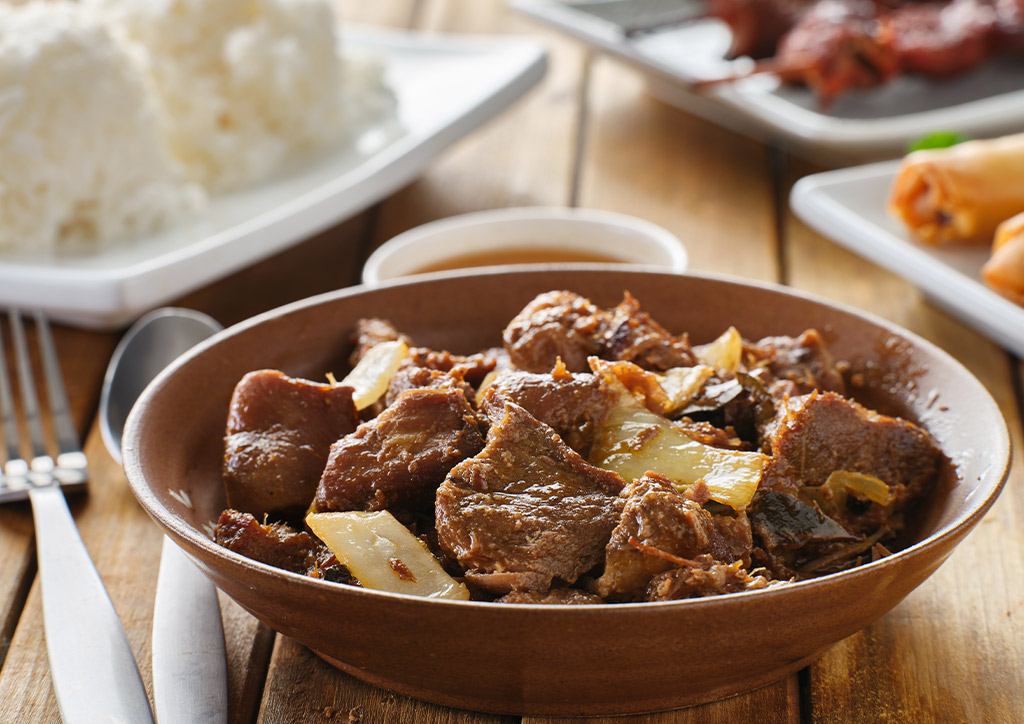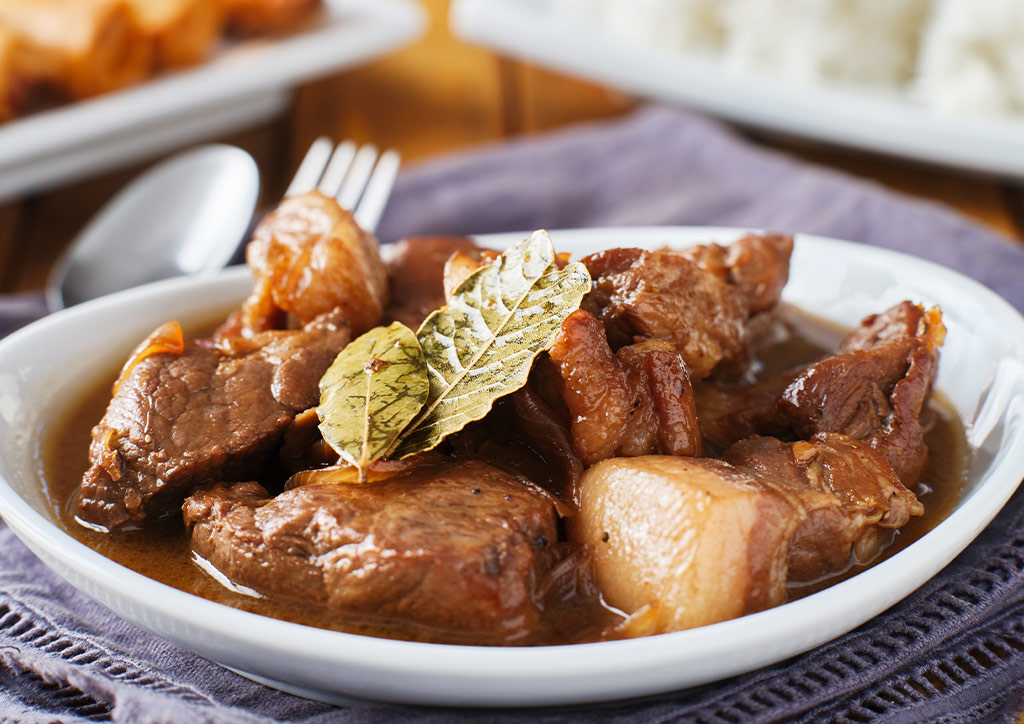Pinay Moms Cook: How To Cook Basic Adobo
Here’s how to cook good adobo!
A Filipino staple, every mom has their own version of what “adobo” is. There’s black, there’s white, in gata, and even coffee-based adobo! Despite the many adjustments and tweaking on recipes of how to cook adobo, there are some elements that don’t change. And for those curious, here’s advice from moms on how to cook good adobo.

The meat in adobo: usually pork and/or chicken
When moms cook adobo, it has pork and chicken as their main viands or ulam. It’s the easiest to buy and has almost the shortest time to cook. Plus, Filipinos love their pork. It’s the fat that melts off that gives the adobo its flavor. However, some adobo recipes have expanded into seafood. Particularly, pusit (squid) using the squid ink or hito (catfish) which some serve with gata (coconut milk).
Meat shops often sell “adobo cut” chicken and pork. But most kids favor drumsticks and thighs for chicken. Pork, on the other hand, has the adobo cut. But liempo (pork belly) does quite well especially if you cut the fat off (knife or scissors will do) and melt it into chicharon, using the fat-turned oil to sauté the garlic and onion.
Chinese adobo usually has boiled eggs in it.
How much garlic do you put in adobo?
In Filipino or Asian cooking, there is no such thing as too much garlic. Cooking adobo means relying heavily on the aromatics like bay leaf, onion, garlic, and peppercorns. So when it comes to garlic, no need to skimp! Some even use two bulbs worth of garlic.
What’s in a marinade?
Some use the marinade as the stew or sauce base when cooking adobo, which is pretty normal. However, some parts of the Philippines use other elements to enhance the flavor. The most common marinade combination would be salt, pepper, and garlic. But other places do pretty well by using calamansi to break down the meat faster. Some also use dark soy sauce to replace the salt in a marinade.
There are a variety of combinations including coffee-based marinade, which is common in the northern side of the Philippines. Others even use cherry wine or strawberry wine if they managed to grab some from Baguio as a delicious marinade for pork.
Sauce Combination
One rule about Filipino cooking: we don’t cook for health, we cook for richness in flavor. It’s also why foreigners love Filipino food. It’s just a bomb of flavor in the mouth. So every component in the adobo sauce is considered the strongest in their group. For soy sauce, we use dark soy sauce. Never light or low sodium. Vinegar, we just grab it off the shelf in the supermarket. But the Philippines has so many types of vinegar that each of them can elevate adobo to a new level. Sinamak, Pinakurat, Bignay — they all have wonderful effects and boast strong flavor profiles.
Some of us have even tried to cook adobo by using calamansi or lemon juice as a substitute for vinegar. It has a milder tartness that melds well with the soy sauce.
Besides, when we mamas cook at home, we cook because we want to see people happy. And nutrition is something we consider whenever we cook.

Sugar or not to sugar?
Some adobo recipes do call for sugar but it also depends on the vinegar. Some use sugarcane vinegar when cooking adobo, using the slight sweetness in it to replace sugar. Most of us just use the typical processed white sugar. But for those who are more aware of the local ingredients, there’s muscovado or what some call linuklot, which has a honey-like flavor profile. There’s also using panutsa (palm sugar) which is commonly used in the syrup or arnibal for Taho.
For diabetics, stevia is relatively okay but it has a grassy aftertaste. Plus, Filipinos can tell the difference between artificial sugar and authentic sugar. Many avoid sugar-free products like the plague.
Adobo Aromatics and Herbs: Bay Leaf and Peppercorns
Filipinos are not too big on herbs unless it’s Italian food like pizza. In their own cooking, they don’t use parsley or whatever herb is out there. In cooking adobo, there are only two that we use: bay leaf and peppercorns. Some use pandan if available but it’s highly optional.
There’s no best way to cook adobo; just the most basic and rigid structures.
Depending on what part of the Philippines you’re in, the adobo sauce can change in ratio. Rarely do they substitute in fear of changing the flavor. Or if they do, they use local ingredients that can boast the same level of taste. While there will always be an ongoing argument on who cooks the best adobo, everyone can agree that adobo will always have a special place in a Filipino’s heart. It’s the taste of home.
More on recipes and cooking:
6 Easy Recipes To Get Kids To Eat Vegetables
6 Fun Tikoy Recipes Your Kids Will Love
This Juana’s Pretty Keen On Staying Green









